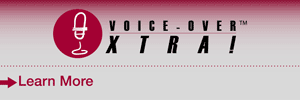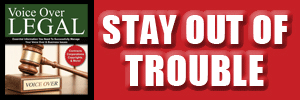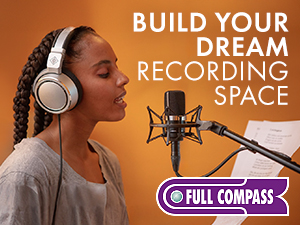|
Part 2
Digital Audio Jargon - Understanding
Sample Rate And Sample Format
 By William Williams By William WilliamsVoice Actor & Coach
Aliso Creek Productions
Let's go back (in Part 1) to our pleasant stroll along that mountain top and look a little closer at what we're doing.
First of all, we rather arbitrarily decide to take an altitude measurement every 10 feet.
But what if we took a measurement every five feet? If we did that, the representation of the mountain would be more accurate, wouldn't it? And if we took the measurement every 20 feet, the representation would be less accurate.
So if were walking at a steady pace the accuracy is determined by how often we take a measurement.
TAKING THE SAMPLE
The techo term for taking a measurement is called: taking a sample or sampling.
And how often you measure is called the sample rate.
NOW, HOW HIGH?
Then there's the other piece of information we collected: how high the mountain is. Remember we measured it in feet (sorry, rest of the world).
But what if we had measured it in inches? Then the measurements would be 12 times more accurate.
But if we measured it in yards, then the measurements would be less accurate - one third as accurate.
So the accuracy of our height measurements is determined by which unit of measurement - i.e., which ruler - we use.
The techno term for the number of units that you use to measure is called the sample format. IN DIGITAL AUDIO
So let's apply this to digital audio. We'll look at sample rate first. Obviously we don't walk along 10 feet ... and we "walk" a lot faster.
In digital audio we actully measure many times - several thousand times - each second.
So the sample rate in digital audio is expressed as how many thousands of sample there are each second - samples per second.
AN EXAMPLE
For example, CD-quality digital sound has a sample rate of 44,100 samples per second.
And since this stuff was all made up by scientists, the number is usually expressed with a decimal and:
So we would say the sampling rate of a CD is 44.1 kilohertz (44,100 times per second).
SAMPLE FORMATS
So how about the sample format?
Notice that when we measured the mountain altitude, the height of the mountain at a particular point didn't change. But the number we used to represent it changed, depending on which scale we used.
So it could be 1,748 yards or 5,245 feet or 62,940 inches.
We're actually dividing the overall height into smaller and smaller - and more and more - units. And the more units we use, the more precise the measurement.
USES MORE BITS
Digital data achieves this increase in accuracy by using more and more bits to represent the waveform height.
Remember, a bit is like one light switch, and digital numbers require one bit per column:
DYNAMIC RANGE
This additional accuracy translates into clearer sound with less noise (hiss).
For you audio purists, each bit gives you an additional 6 dB (decibles) of theoretical signal to noise ratio. This is called the dynamic range. Thus:
DETERMINING BITS
When they invented CDs, they had to pick the number bits that determined the divisions to divide the waveform height into.
They figured that 96 decibles was pretty darn good, so they settled on 16 bits as the CD sample format.
PUTTING IT TOGETHER ...
When the numbers are thrown around, they are usually expressed with the sample format first and the sample rate second. Soooooo ... the digital sound data recorded on a CD is 16 bit, 44.1 kilohertz data. By the way, this is the most common data format and rate used to send files to clients, so if they don't have a preference, use this.
Another common format is 16 bit, 48 kilohertz. This is often used on video editing systems.
SAVE ON COMPUTER
You can also save this audio data on your computer in exactly the same way. This happens when you "rip" a CD track to your computer. If you save it to a PC computer you will create a .wav (pronounced "wave") file. If you save it to a Mac computer you will create an .aiff (pronounced "A-I-F-F" - sorry!) file. PCM RECORDING
Trust me, you'll will never need to know this, but this type of recording is called PCM or Pulse Code Modulation recording. If the sample format and sample rate are high enough, it can accurately record sound beyond the range of human hearing.
For example, 24 bit, 96 kilohertz recording can record a dynamic range of 144 decibles and a sound spectrum from 20-48000 hertz.
They came up with this method of recording to accurately record the best possilble sound without any of the hiss, rumble, wow and flutter that was inherent in mechanical recording on tape and LPs.
EXACT COPIES
And as an added bonus ...
When you send a digital audio file to someone, you're NOT sending them sound. Rather, you are sending the the numbers that represent the sound.
This lets you copy the digital data, and then copy that copy, and then copy that copy of the copy, etc., a thousand times. And each copy will be an exact replica of the original!
COOL DIGITAL THINGS
And you can do all those cool things you do with digital files:
So for fancy projects that want the best audio, .wav files and .aiff files are the way to go.
Trouble is, these files are BIG ... I mean REALLY BIG!
Coming next:
ABOUT WILLIAM ...
William Williams is a voice over talent with national, regional and local credits. He has also been a voice over coach in Los Angeles for 15 years where he teaches regular classes, does private coaching, and produces voice over demos at Aliso Creek Productions, in Burbank. He also offers online voice-over classes and coaching.
Email: william@alisocreek.net
Online voice-over classes: http://onlinevoiceoverclasses.com
... Low Prices ... Speedy Delivery!
|
As of the NEW website launch, 03/22/2012



.png)






Thanks! I love the anology! To quote Homer "Doh!"
Paul J. Warwick
Well Read for the 21st Century